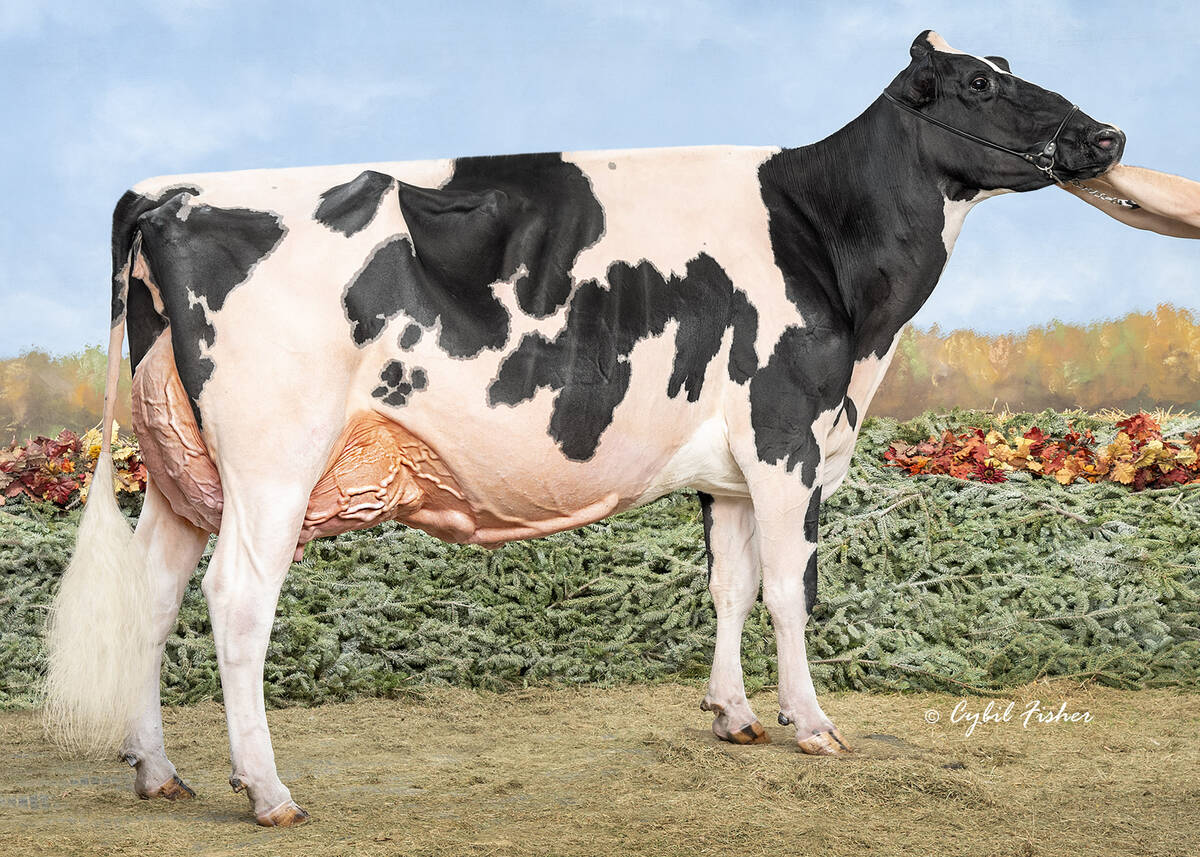Theories abound | Why is Mary Fitzpatrick’s grave outside of the cemetery boundaries in Granum, Alta?
GRANUM, Alta. — A caragana hedge encloses the Granum graveyard, marking its boundary with leafy greenery.
But Mary Fitzpatrick’s grave sits alone outside the hedge, its headstone and wrought iron enclosure in full view of heavy traffic along Alberta’s busiest highway.
“Sept. 5, 1865 – Apr. 16, 1908,” the stone reads. “Beloved wife of E.R. Chugg.”
The outlying grave has long been the subject of rumour, speculation and inquiry, said Mike Sherman of the Granum Historical Board.
“We get questions about that grave from all over North America. They see that grave outside the cemetery and of course, like any small town, there’s all sorts of rumours and stories that go around that grave.”
Read Also

Saskatchewan dairy farm breeds international champion
A Saskatchewan bred cow made history at the 2025 World Dairy Expo in Madison, Wisconsin, when she was named grand champion in the five-year-old Holstein class.
One rumour has it that the lady committed suicide and thus could not be buried in consecrated ground. On the seamier side, another rumour suggests she was a “scarlet woman” left out for the same reason.
“The family, and the family is still here, their side of the story … and it’s a very plausible one as well, is that she was buried there before the official boundary of the cemetery was laid out and therefore it was just a survey error,” said Sherman.
However, that doesn’t make for such a good story, he admitted. It also leads one to question the plan used by the caragana hedge planters that came along later.
However, Sherman’s favourite story involves Ebenezer Chugg, the “E” in the E.R. noted on the gravestone, and Granum’s fee of $1 per foot for digging graves.
“He was notoriously a tight man, very frugal and so the other story is that he was too tight to pay the five bucks to have his wife buried inside the cemetery so he buried her just outside.”
The historical board is working on a walking tour of the graveyard, a companion to its walking tour of the town.
The outlying grave won’t be the only interesting tale it will tell. Sherman recounts the story of another late resident of Granum who insisted he be buried with a can of snuff and a bottle of beer.
“He wasn’t sure which way he was going but he wanted to make sure that whether he was going to heaven or hell, he had the snuff and the beer with him anyway.”
Then there’s the heartbreaking grave of 11-year-old J. M. Maclean, a stonecutter’s son, who was killed in a farming accident. The father carved replicas of the boy’s cap and shoes for the grave, now heavily adorned with lichen and showing the weather of the past 86 years.
“Jesus loves me, this I know, for the Bible tells me so,” reads a stone at the foot.
The Granum cemetery dates back to the late 1800s.
The walking tour is a work in progress by the board’s eight volunteers, who also operate the museum and look after the cenotaph.
Sherman said the former cemetery caretaker died recently, taking much of the history with him.
“We’ve kind of picked up the torch and will continue on,” said Sherman.
“The town’s done a lot of work as far as marking graves and whatnot are concerned, and we thought it would be of interest to our visitors as well, to put together this little walking tour of our cemetery.”
Granum, population 445 at last official count, is 25 kilometres north of Fort Macleod, Alta., just off Highway 2.















